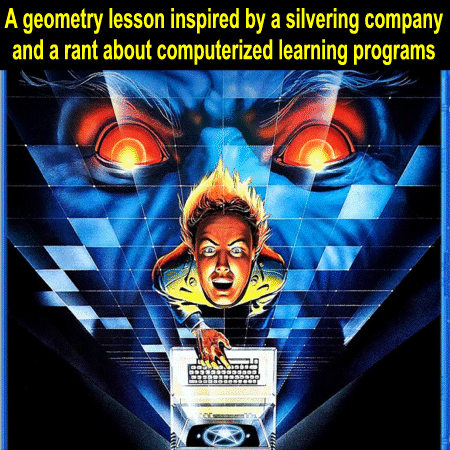A geometry lesson inspired by a silvering company – and a rant about computerized learning programs
Here is some information that teachers at quite a few different levels could use* for a really interesting geometry lesson involving reflections involving two or more mirrors, placed at various angles!
Certain specific angles have very special effects, including 90, 72, 60, 45 degrees … But WHY?
This could be done with actual mirrors and a protractor, or with geometry software like Geometer’s Sketchpad or Desmos. Students could also end up making their own kaleidoscopes – either with little bits of colored plastic at the end or else with some sort of a wide-angle lens. (You can find many easy directions online for doing just that; some kits are a lot more optically perfect than others, but I don’t think I’ve even seen a kaleidoscope that had its mirrors set at any angle other than 60 degrees!)
I am reproducing a couple of the images and text that Angel Gilding provides on their website (which they set up to sell silvering kits (about which I’ve posted before, and which I am going to attempt using pretty soon, on a large astronomical mirror I’ve been polishing for quite some time)).

At 72º you see 4 complete reflections.

When two mirrors are parallel to each other, the number of reflections is infinite. Placing one mirror at a slight angle causes the reflections to curve.
===========
Rant, in the form of a long footnote: CONTINUE READING: A geometry lesson inspired by a silvering company – and a rant about computerized learning programs | GFBrandenburg's Blog

